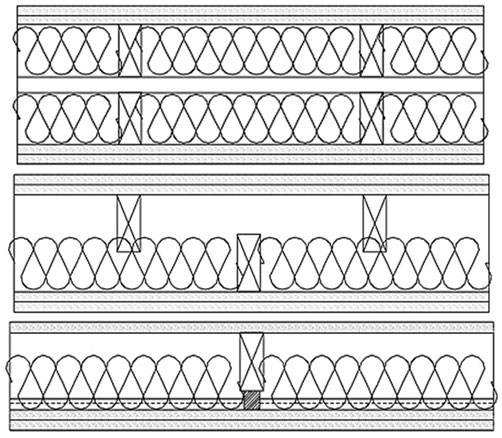Noise Control and Room Acoustics in Building Design
Sound isolation ceilings
Resilient isolation hangers that suspend drywall ceilings greatly improve STC and IIC.
Isolation clips. Designers wanting low-cost, space saving ceilings and walls that provide noise control have the option of using sound isolation clips. These attach to ceiling joists, wall studs, or masonry and secure the drywall furring channel. One or more layers of gypsum board are then hung to the furring channel.
Spring isolation hangers. These are best for low frequency sound or vibration. Secured to wood-frame construction (e.g., joists, trusses), a typical hanger incorporates a one-inch-rated deflection spring in series with a neoprene cup, and will resiliently support one or more layers of gypsum board.
Leaf spring hanger. Developed by one manufacturer the leaf spring hanger out-performs resilient channel and sound clips with or without gypsum concrete.
Fiberglass or neoprene hangers are lower cost, labor saving and effective in many applications.
Super-compact ceiling hanger. This low profile isolated hanger assembly may be specified when minimizing ceiling drop in an occupied space. It uses less than 3-1/2 in. of space and is often used in renovation projects.
 |
Compared with staggered stud construction, double stud wall design provides a higher STC value. Adding an isolation clip and gypsum board layers to a single stud wall increases STC. Image provided by Kinetics Noise Control |
 |
Wall isolation clips increase STC. Image provided by Kinetics Noise Control |









